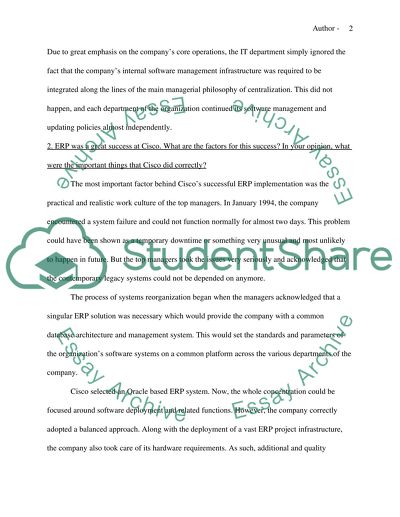Cisco Systems: Implementing Customized ERP in Nine Months and within Case Study. Retrieved from https://studentshare.org/information-technology/1497173-cisco-systems-implementing-customized-erp-in-nine
Cisco Systems: Implementing Customized ERP in Nine Months and Within Case Study. https://studentshare.org/information-technology/1497173-cisco-systems-implementing-customized-erp-in-nine.


